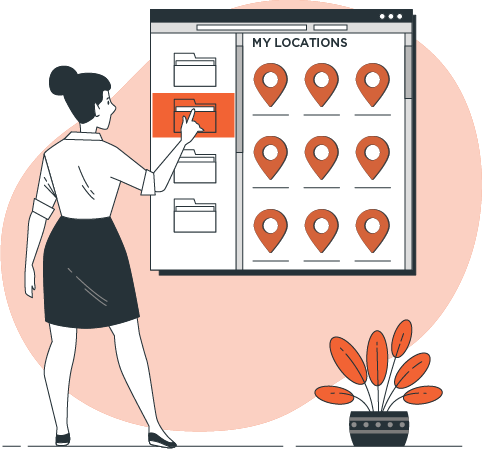Understanding ‘who’ and ‘where’ – introducing My Locations
We live in a world which is both global and connected but not as interoperable as is required to streamline supply chain processes.
Products, parcels, and packages can be ordered from a smartphone or even a smartwatch with ease these days. Within moments a decision to order a product can turn from a thought, to your fingertips, to a parcel winging its way to you from the other side of the world.
Underpinning robust supply chains is the use of globally unique identifiers of things and locations. An order you place instore or online moves from one location somewhere in the world through multiple locations before it turns up at a store ready for you to pick up, or at your doorstep. This may sound efficient, but there’s usually a period in transit where the item loses visibility, typically when the item is handed from one carrier to another whose systems don’t talk with each other. Most shipments work this way, making it challenging to identify unique products and locations in supply chains quickly.
Introducing Global Location Numbers (GLNs)
GS1’s Global Location Numbers (GLNs) are globally unique identifiers used to identify a party or location anywhere in the world. When understood and implemented correctly in supply chain processes, GLNs can become powerful tools for business. A key to global interoperability is universal adoption of GLNs throughout the supply chain by all players to create a ‘global language’ that’s widely understood and used. For example, the use of GLNs to identify locations was borne out in a significant way during the COVID pandemic. GLNs were encoded into the QR Code on the COVID-19 posters across New Zealand to identify over 500,000 businesses and locations. Having a standardised way to identify businesses and locations was a key enabler in New Zealand’s contact tracing response and underpinned efforts to detect and manage COVID-19 outbreaks.
There are many other applications for GLN use including streamlining logistics operations, warehouse management and inventory control, and enhancing e-invoicing processes between trading partners.
Every business registered in New Zealand has a New Zealand Business Number (NZBN), which is a GLN sourced from GS1 New Zealand and issued through the Companies or Incorporated Societies Office.
Introducing My Locations by GS1 NZ
Given the numerous use cases, many organisations have multiple GLNs and allocating and managing them can be complex. To help with this, GS1 New Zealand has recently launched ‘My Locations,’ an online tool for allocating and managing GLNs. The tool is available to all GS1 New Zealand members and provides members the ability to manage their locations all in one place. The introduction of My Locations is timely for GS1 New Zealand members as organisations continue to become more reliant on GLNs for different purposes across their organisations and supply chain.



